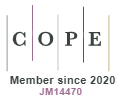Socioeconomic differences and quality of life in elderly practitioners of physical/psychosocial activities
DOI:
https://doi.org/10.5585/conssaude.v14n2.5324Keywords:
Elderly, Physical activity, Leisure activities, Quality of life.Abstract
Introduction: As a result of physiological and environmental changes associated with aging, the elderly have health conditions different from those of the young. Objective: To compare the quality of life (QOL) of elderly practitioners of regular physical activity (RPA) and psychosocial activities (PA) using the Whoqol-Breff and Whoqol-Old instruments, in relation to socioeconomic profile. Methods: We interviewed 108 elderly persons, divided into two groups: RPA (n=54) and PA (n=54). Results: There was a predominance of females and higher-educated individuals (p<0.05) in the RPA group. The PA group earned up to three times the minimum wage (p<0.05), and its participants worked in general services/maintenance jobs, while the members of the RPA group were employed in health and home services activities (p<0.05). The scoring was high in the physical domain (71.0 ± 15.6) and in social relations (70.7 ± 15.2) when Breff was applied in the RPA group. Social relations scores increased in the PA group (69.1 ± 19.1); in the RPA group, the physical domain was significant (p<0.05). In Old, “past present future”, “social participation”, and “self-esteem” showed p<0.05. Conclusion: Education and income had an influence in the practice of exercise and in quality of life.Downloads
Downloads
Published
2015-08-11
How to Cite
1.
Oliveira JGD, Stobaus CD, Costa JM. Socioeconomic differences and quality of life in elderly practitioners of physical/psychosocial activities. Cons. Saúde [Internet]. 2015 Aug. 11 [cited 2025 Jun. 20];14(2):200-12. Available from: https://periodicos.uninove.br/saude/article/view/5324
Issue
Section
Artigos
License
Copyright (c) 2015 ConScientiae Saúde

This work is licensed under a Creative Commons Attribution-NonCommercial-ShareAlike 4.0 International License.
Views
- Abstract 342
- PDF (Português (Brasil)) 234







